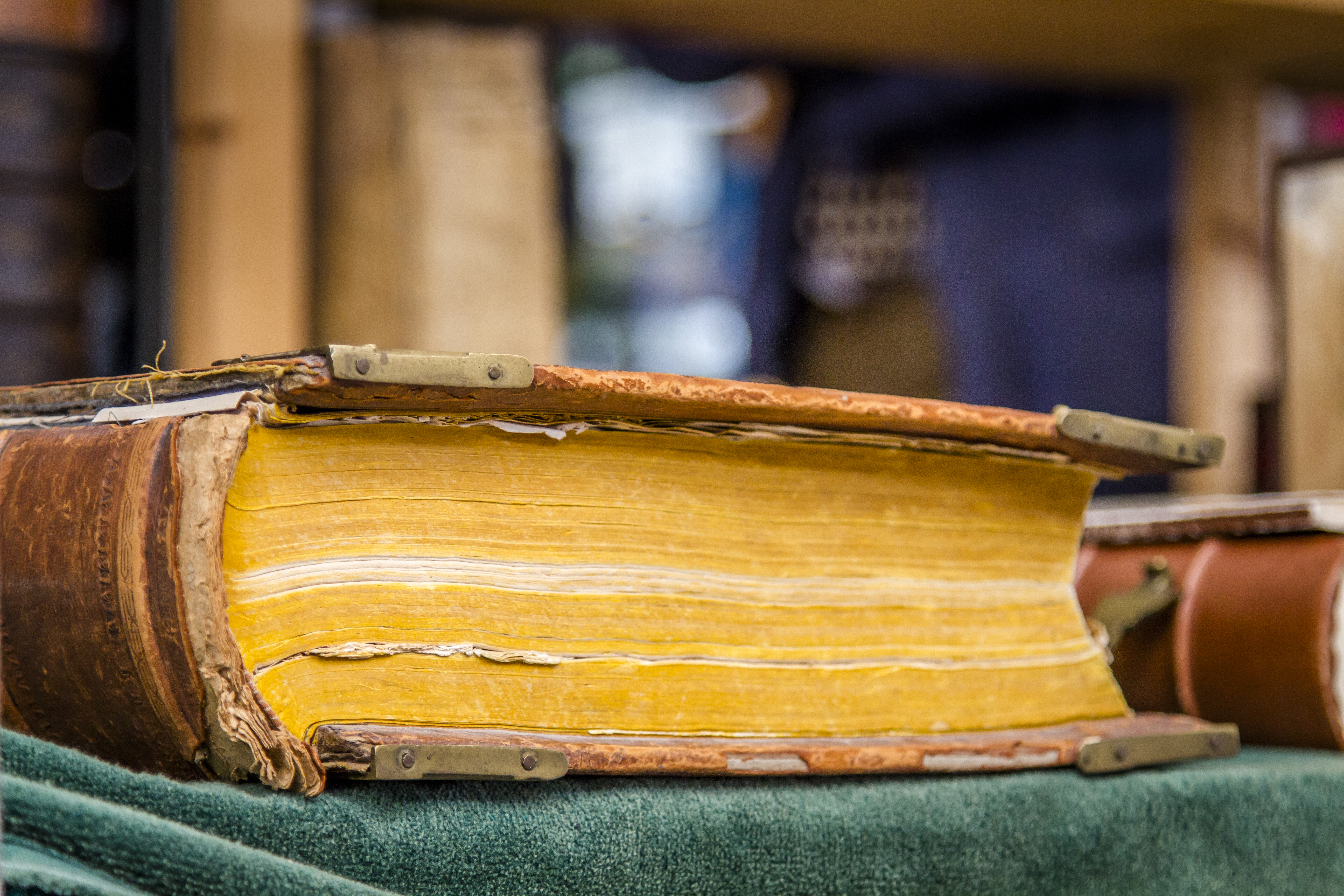Why Do Books Turn Yellow?
Ah, the beloved smell of old books. There’s something magical about flipping through the yellowed pages of a well-worn novel. But have you ever wondered why books turn yellow in the first place? Well, my curious reader, today we’re going to dive into the fascinating world of book aging and uncover the secrets behind this yellow phenomenon.
Imagine this: you’re snuggled up in a cozy armchair, engrossed in a classic tale. As you turn the pages, you notice a gradual transformation. The once bright white paper has now taken on a warm, golden hue. But why does this happen? Well, dear reader, there are a few factors at play here. One of the main culprits is the natural degradation of paper fibers over time. As books age, the lignin present in the paper begins to break down, causing the paper to become more acidic. This acidity, combined with exposure to light and air, triggers a chemical reaction that leads to the yellowing of the pages.
But that’s not the whole story! There’s another element in this yellowing equation: the ink itself. Back in the day, books were printed using iron gall ink, a concoction made from tannins and iron salts. Over time, this ink can oxidize and interact with the paper, further contributing to the yellowing effect. So, while the yellowed pages may give books a sense of character, it’s important to understand the science behind it. Now, let’s embark on this literary journey and explore the wonders of book preservation and restoration.

**Why Do Books Turn Yellow?**
Books are not only a great source of knowledge and entertainment, but they also hold sentimental value for many people. However, over time, you may have noticed that some books start to turn yellow. This discoloration can be concerning, especially if you want to preserve your books for as long as possible. So, why do books turn yellow? Let’s explore the reasons behind this phenomenon and what you can do to prevent it.
**Factors That Cause Book Yellowing**
There are several factors that contribute to the yellowing of books. One of the main culprits is the type of paper used in older books. Acidic paper, commonly used before the mid-20th century, is highly susceptible to yellowing. As the paper ages, the acids in it break down and release lignin, a natural polymer that turns yellow over time. This process is known as acid hydrolysis.
Another factor that contributes to book yellowing is exposure to light. Ultraviolet (UV) rays from sunlight or fluorescent lighting can cause the paper fibers to deteriorate, leading to discoloration. Heat and humidity also play a role in accelerating the yellowing process. High temperatures and excessive moisture can cause the paper to react chemically and promote the breakdown of lignin.
**Preventing Book Yellowing**
While it is impossible to completely stop the natural aging process of paper, there are steps you can take to slow down the yellowing of books. One of the most effective ways is to store your books in a cool and dry environment. Keep them away from direct sunlight or intense artificial light sources. If possible, store them in a temperature-controlled room or use UV-filtering curtains or blinds to minimize light exposure.
Using acid-free archival-quality materials for book storage can also help prevent yellowing. Acid-free paper and boxes, as well as plastic sleeves made from polyethylene or polypropylene, can provide a protective barrier against external factors that cause discoloration. These materials are pH-neutral and do not contain harmful acids that could accelerate the yellowing process.
Another important aspect of book preservation is proper handling. Always wash your hands before touching books, as oils and dirt on your hands can transfer to the pages and contribute to discoloration. Use book supports or book cradles to avoid placing stress on the spine when reading or displaying books. Avoid eating or drinking near books to prevent accidental spills that could damage the pages.
**The Importance of Book Preservation**
Preserving books is not just about maintaining their aesthetic appeal, but also about preserving their historical and cultural value. Books are valuable artifacts that provide insights into different time periods, cultures, and ideas. By taking proactive measures to prevent yellowing and deterioration, we can ensure that future generations can continue to enjoy these literary treasures.
**Conclusion**
Understanding why books turn yellow can help us take steps to prevent or slow down the yellowing process. By storing books in a suitable environment, using acid-free materials, and practicing proper handling techniques, we can extend the lifespan of our cherished books. Remember, the preservation of books is not just about maintaining their physical appearance, but also about preserving the knowledge and stories they hold. So, take the necessary precautions to keep your books in pristine condition for years to come.
Key Takeaways: Why do books turn yellow?
- Books turn yellow due to a natural process called oxidation.
- Oxidation occurs when the chemicals in paper react with oxygen and light.
- Exposure to sunlight and air accelerates the yellowing process.
- Acidic paper and poor storage conditions can also contribute to book yellowing.
- Proper book care, such as storing in a cool, dark place, can help slow down yellowing.
Frequently Asked Questions
Why do books turn yellow?
Over time, books can naturally turn yellow due to a process called oxidation. This happens when the paper in the book is exposed to air and light. Paper is made from wood pulp, which contains lignin, a natural substance that gives strength to the paper fibers. However, lignin is also prone to breaking down when exposed to oxygen and ultraviolet light.
As the lignin breaks down, it releases acids that cause the paper to turn yellow. Additionally, the exposure to light causes the paper to become more brittle. This is why older books, which have been exposed to air and light for a longer period, tend to be more yellow compared to newer books.
How can I prevent my books from turning yellow?
To prevent your books from turning yellow, it is important to store them properly. Keep your books away from direct sunlight and fluorescent lighting, as these emit ultraviolet light that can accelerate the yellowing process. Instead, store your books in a cool, dry, and dark environment.
You can also consider using acid-free and lignin-free archival materials for book storage. These materials are specifically designed to minimize the deterioration of paper and prevent yellowing. Additionally, handling books with clean hands and avoiding food or drinks near them can help prevent stains and further damage.
Can yellowed books be restored?
While it may not be possible to completely reverse the yellowing process, there are steps you can take to improve the appearance of yellowed books. One option is to gently clean the pages using a soft brush or cloth to remove surface dirt and dust.
Another method is deacidification, where a professional conservator treats the book with a deacidification solution to neutralize the acids and slow down further yellowing. However, it is important to note that these restoration techniques should only be performed by professionals to avoid causing further damage to the book.
Are all books prone to yellowing?
While most books are susceptible to yellowing over time, the rate at which they yellow can vary depending on several factors. The type of paper used, the environmental conditions in which the book is stored, and the amount of exposure to light and air all play a role in the yellowing process.
Books that are printed on low-quality or acidic paper are more likely to yellow quickly. On the other hand, books printed on acid-free paper or stored in optimal conditions can remain relatively white and free from yellowing for a longer period.
Does yellowing affect the readability of books?
Yellowing itself does not directly affect the readability of books. However, as the paper becomes more brittle with age and exposure to light, it can be more prone to tearing or crumbling. This can make it more difficult to handle and read older books.
In some cases, the yellowed pages may also become more opaque, making the text appear fainter. However, this can vary depending on the severity of the yellowing and the quality of the paper. Overall, while yellowing may not impact the readability significantly, it is important to take proper care of books to ensure their longevity and readability.
Why Do Pages of Books and Newspapers Turn Yellow Over Time?
Final Thought: Why Do Books Turn Yellow?
In the grand tapestry of life, books hold a special place. They are our companions, our portals to different worlds, and our sources of knowledge. But have you ever wondered why some books, over time, develop a yellowish hue? It’s a curious phenomenon that has puzzled book lovers for ages. After diving deep into this question, we can conclude that several factors contribute to this natural aging process.
One of the primary culprits behind the yellowing of books is the paper itself. Most books are printed on acidic paper, which reacts with oxygen and light over time, causing chemical reactions that result in discoloration. Additionally, exposure to heat and humidity accelerates this process. Therefore, even well-preserved books can succumb to the inevitability of time and gradually turn yellow.
But fear not, dear bookworms! There are steps you can take to slow down this browning process. Storing your books in a cool, dry environment away from direct sunlight can help preserve their pristine condition. You can also consider using acid-free archival sleeves or covers to shield them from external factors. By taking these precautions, you can extend the lifespan of your beloved books and keep them looking fresh for generations to come.
Remember, the yellowing of books is a testament to their age and history. It’s a gentle reminder that these literary treasures have stood the test of time, carrying stories and knowledge from one generation to another. So, embrace the yellowed pages, for they hold within them the wisdom of the past and the promise of a timeless journey. Keep reading, keep exploring, and keep cherishing the magic that books bring into our lives.






